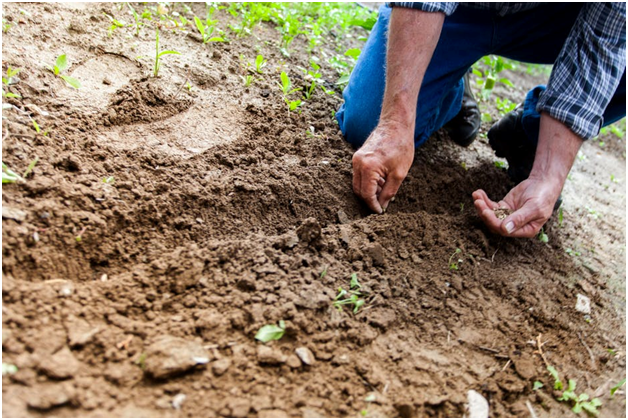You’ve always wanted to have a beautiful yard full of flowers and brightly colored veggies. You set to work with this goal in your mind, only for everything to come crashing down when none of your plants so much as sprout.
What could you have done wrong? Chances are if this was your first attempt, a lot of things. If you let weeds overtake the garden or don’t allow your plants to get enough light, they won’t be able to get the nutrients they need to survive.
We’ve got a few gardening tips and tricks that will prevent you from making the same mistakes again. Grab your yard tools and follow along as we help you tap into your green thumb.
1. Weeds
Weeds are one of the most common gardening problems. It doesn’t take them long to overthrow an entire garden, making them the bane of anyone’s existence.
The good news is that they’ll only spring out of control if you let them. There are plenty of ways for you to stop them in their tracks.
Let Them Rest
The thing about weeds is that every yard has them. Meaning that the seeds live deep underground, waiting to germinate and spring up. You’ll make this easier for them if you stir them up to the surface.
This being said, you should only dig when you have absolutely no other choice. Instead of disturbing the dirt to dig up dandelions, stab a knife into the ground to disrupt the roots. Over time, the plant will die without you having to do any further work.
If you must dig, put down some mulch afterward or plant something. This will minimize the number of weeds that sprout up due to your actions.
Utilize Mulch
Every plant needs an adequate amount of sunlight to thrive. This is the case for even weeds. By putting down a healthy layer of mulch, you cut them off from their supply of sunshine.
If you can, spring for organic mulch. Oftentimes these contain small creatures that love to feast on weed seeds. Try to avoid chunky mulches if at all possible. They’ll still allow for some light to pass through and get to the seeds laying below.
Weed at the Right Time
There is no wrong time to kill weeds, but there are situations where you’ll have an easier time with it. Go out with a fork after it rains. You’ll be able to twirl the plants around the fork like a spaghetti noodle and pull them right out of the ground.
If it’s dry out, you’ll go outside with a steak knife instead. If you slice them off right by the soil line, they’ll shrivel and die.
Drip Water
You want to water your plants without giving any nutrients to the weeds. The best way to do this is to install a drip system under your mulch.
We will warn you that some weeds thrive with this system, but for the most part, they won’t be able to get the water they need to stay hydrated.
2. Spots on Roses
If you’re trying to grow roses, your list of common garden problems will consist of black spots on the leaves. These spots are a sign of a fungal disease.
The spots are only stage one. After a while, the leaves will turn yellow and fall to the ground. We will tell you that this illness is only common in certain areas of the world.
If you don’t live in one of these locations, you won’t have to worry about this issue as much. If you do, don’t worry, you can still grow roses.
Make sure that you don’t overwater your plants and let them get plenty of sunlight. Do this, and you should be good to go.
3. Not Enough Sunshine
If your plants don’t get enough sunlight, they won’t be able to grow as they should. If your plants grow up long and scrawny, it means that they’re straining themselves to get the resources they need.
The best gardening tips dictate that you’ll need to fix this problem by turning the plant. This will ensure that each side of the plant is getting the sunlight that they need to flourish.
4. Powdery Mildew
If you live in North America, you may spot little white fluffy spots on your plant’s leaves. These are mildew. Once it pops up on your fruits and veggies, there’s no way to get rid of it. All you can do is control the severity of it.
Spray the infected plants with fungicide and remove the mildew-covered leaves. If you don’t have a fungicide on hand, you can make your own by combining milk and water in a spray bottle.
5. Aphids
Aphids are tiny bugs that feed on fruit, plant juices, and buds. You can get rid of them by spraying them away with water or insecticides.
You can also introduce ladybugs into your garden. They love snacking on them.
Once you’ve got the little buggers under control, spray your garden with neem oil for plants. It will stop the annoyances from showing up again.
Gardening Tips and Tricks to Live by
Starting your first garden of flowers and veggies isn’t easy as it seems. If you don’t give your plants enough water or allow weeds to spring out of control, you’ll never see a fruitful harvest.
Use these gardening tips and tricks to take control of your garden and develop the green thumb that you’ve always had deep down inside of you.
Are you looking for more ways to have a successful garden? Check out our blog daily for all the latest news and advice.

